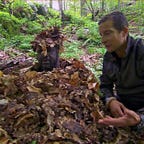Does “The Hot Hand” exist for assists? (Or: Does LeBron have a hot hand for assists?)
The “hot hand” is a popular theory in basketball that has been believed, dismissed, refuted, and unrefuted a number of times . It holds that once a player makes a few shots in a row, they’re more likely to hit their next shot. Once they’ve had a few go in, they become “in the zone”, or, as it goes, “on fire.” It says, for instance, that if you make two shots in a row, you’ll be more likely to make your next attempt than you would if you’d missed your most recent attempt.
And it’s true, to an extent. According to Harvard researchers:
Players who have made an unusually high number of their last four shots will have a 1.2 to 2.4% greater likelihood of making their next shot than normal when accounting for shot difficulty.
But I wondered: what if this is true for more than just shooting? What if the idea of the hot hand extends to passing as well?
What if, after getting a few assists in a row, you’re more likely to convert on your next pass than you would be had you just turned the ball over?
But first, some questions:
Why only one player, and why only 110 games?
This data took up 5 different spreadsheets and over half a million cells. Compiling the data took 20 hours. Excuse me if I stop then. Besides, 110 games is a decent sample size.
If you’re going to write an article about it, shouldn’t you know how to do more?
That’s… actually a very good point. Whatever.
Why LeBron?
Well, firstly, name recognition. Also, LeBron is towards the top of the league in assists every year. Using him means we can see long stretches of assists in a row, and gives us a better data set then, say, Shelvin Mack.
Why do you always say “we” in your articles? I’m not doing anything.
You’re right! Good point. Anyway, enough questions. Let’s get to the data.
The data is comprised of all games LeBron James has played in since the beginning of the 2017–18 NBA season up to December 13, 2018 (110 games). I imported the play-by-play data of all 110 games and used formulas to count the number of assists in a row LeBron would tally before recording a Bad Pass-Turnover. The number reset to zero at the beginning of each game, as a theoretical hot hand wouldn’t carry over from game togame. One can’t remain “locked in,” at least in the way we think of it, for the length of an entire day and night.
From that data I produced a data table that counted the number of times LeBron had n number of assists in a row. That way, I could see his chance of recording his next assist based on the number of assists he had in a row.
I also calculated his Assist to Bad Pass-Turnover ratio.
From this ratio, I calculated that James’ chance of getting an assist (as opposed to a bad pass turnover) at any time.
1 - (1/ 3.316742081) = 0.6984993179
If the hot hand doesn’t exist, then we’d expect this number to remain constant, like a coin flip. So I graphed the percentages vs this number for all times than n was large (n≥30) (I cheated and included the chance after 7 assists, because there were 29 instances that 8 assists were recorded) (it felt close enough).
I also did a rolling average up through 10 assists.
So what does this prove? There may exist a hot hand for assists, as the above data supports. But we’ll need more than one player, and more than 110 games to concretely say so.
Here’s a spreadsheet outlining how I collected the data (if you’re crazy, you can make a copy of it and fill it out for whatever player you want).
